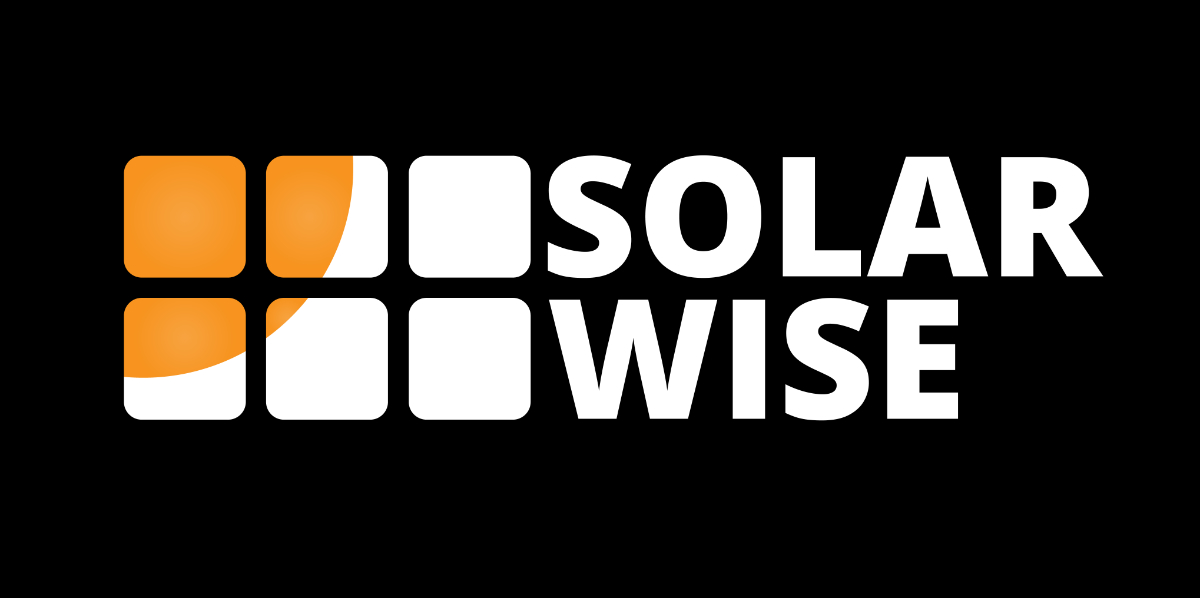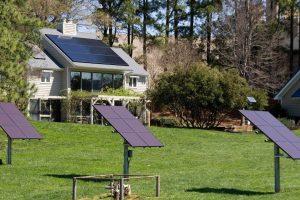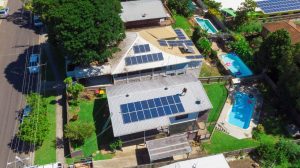Solar energy is rising as a greener substitute to conventional power sources. Solar innovations are pivotal in reducing carbon footprints and making electricity more affordable, whether in homes, businesses, or broader industrial settings. In this piece, we’ll delve into the top uses of solar energy and their advantages for people and broader communities.
The adaptability of solar energy means it can be integrated into various scenarios. From house-top solar installations providing electricity to families and companies to grand solar farms lighting up whole towns, solar presents an eco-friendly answer to our escalating power demands.
This piece examines how solar energy reshapes our energy consumption patterns and reduces our dependency on non-renewable sources.
Benefits of Solar Energy
Compared to conventional energy sources, solar power has several compelling advantages. Here are some:
- Endless and Eco-friendly: Solar energy is a limitless resource available almost everywhere. It generates electricity without emitting harmful substances, positioning it as a green energy alternative.
- Budget-friendly in the Long Run: Though the initial investment in solar panel installation might be steep, the financial gains in the long term can more than make up for it. Utilizing solar energy can reduce utility bills and offer a long-term return on your investment.
- Easy to Maintain: Solar panel systems are generally low-maintenance, offering a cost-efficient and uncomplicated solution. The typical lifespan for these panels ranges between 25 and 30 years, and they need little in the way of ongoing care.
- Multi-functional: The adaptability of solar power is another one of its strong points. Solar energy is incredibly versatile, whether lighting homes and commercial spaces or electrifying entire towns. It’s also increasingly used to power vehicles and offer heating and cooling options.
- By tapping into these benefits, solar energy is an innovative and sustainable choice for our energy needs.
Residential solar energy applications
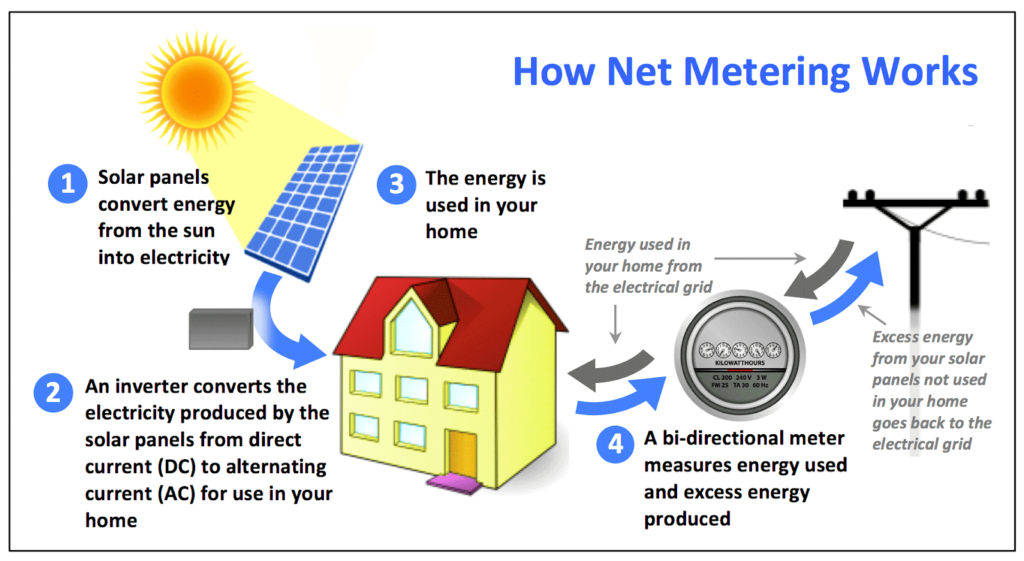
Credit: solaflect.com
The rise in solar energy adoption for home use is driven mainly by its multifaceted advantages. One of the standout residential solar integrations is the rooftop solar panel system. Positioning these panels on rooftops traps the sun’s rays, transforming them into usable electricity for homes and other living spaces. For homeowners, this translates to sizable savings on power bills, the capability to produce eco-friendly energy, and a significant reduction in carbon emissions.
Solar-powered water heating systems are also carving a niche in many households. These setups harness solar radiation to warm water, presenting an efficient and green replacement to conventional water heating techniques. This method of heating water trims down energy usage and cuts back on monthly utility expenses, giving homeowners both warm baths and peace of mind.
Further adding to the suite of residential solar solutions is the emerging trend of solar-illuminated outdoor spaces. These solar lights incorporate photovoltaic cells, which capture sunlight, turning it into electricity. This energy is then stored in batteries for nighttime use, powering the outdoor lights. What makes them particularly appealing is their energy thriftiness and the absence of complex installation or hefty electricity charges.
The appeal of solar applications for homes lies in the blend of economic savings, ecological mindfulness, and energy independence they provide. Increasingly, households are turning to solar technology to light their homes and lives as solar technology continues to evolve.
Commercial solar energy applications
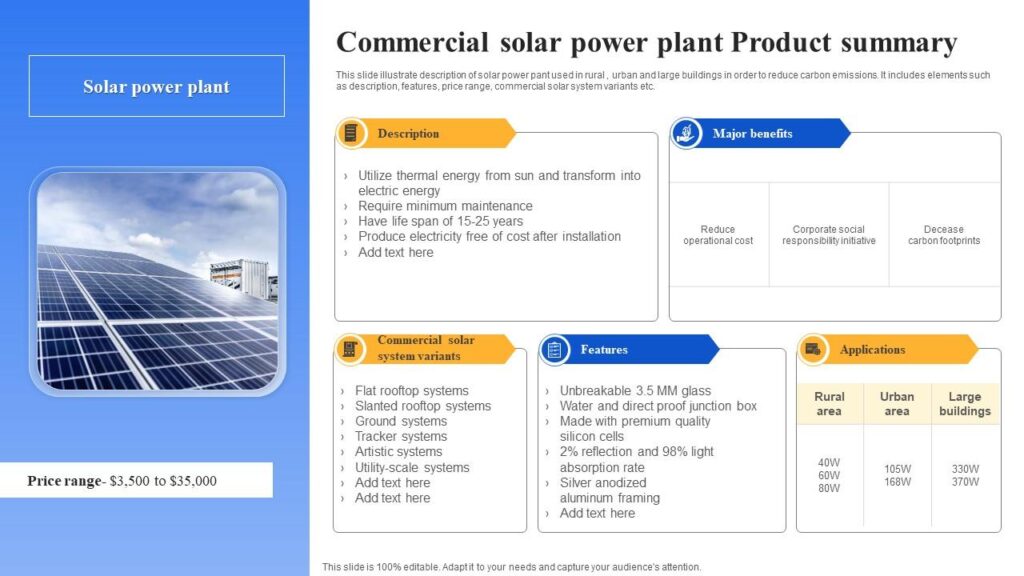
Credit: slideteam.net
Commercial spaces are increasingly using solar energy, giving companies a dual benefit: lowering energy expenditures and bolstering their eco-friendly credentials. A prevalent use of solar energy in the commercial sector involves installing solar panels on office structures and business premises rooftops. These installations serve the dual purpose of producing electricity for internal operations and offering the possibility of selling surplus energy back to the electrical grid, thereby further decreasing operational costs.
Another commercial solar application gaining traction is solar-driven street lighting. Equipped with solar panels, these streetlights store solar energy in batteries during the daytime, which is then used to illuminate streets, parking areas, and public spaces after sunset. This presents a cost-efficient and green alternative for public lighting.
Additionally, large solar farms are becoming game-changers in the commercial solar landscape. These expansive setups consist of numerous solar panels that churn out electricity at a large scale. The energy thus produced can either cater to the power needs of entire communities or be sold off to utility services, thereby contributing to a cleaner and more sustainable energy network.
For businesses, adopting solar energy means reduced operational costs, greater energy autonomy, and an enhanced brand reputation for sustainability. With ongoing advances in solar technology, the commercial world is set to leverage solar power in an increasingly expansive manner in the years ahead.
Industrial solar energy applications
Solar energy is increasingly becoming a cornerstone in reshaping the industrial landscape by offering green, sustainable energy alternatives. Large factories and industrial hubs stand to gain considerably from embracing solar applications. One notable solar application in the industrial sector is solar-fueled water pumping systems. By converting solar power into mechanical energy, these systems run water pumps for a variety of industrial needs, thereby reducing dependence on fossil-fueled pumps and cutting operational expenses.
Solar thermal solutions are another growing trend within industrial settings. These setups harness the sun’s heat for various industrial operations like drying, sterilizing, and even warming workspaces. Adopting solar thermal technologies allows industries to dial back on their use of fossil fuels, consequently curbing their greenhouse gas output.
Beyond water pumping and thermal systems, solar energy is increasingly powering remote and off-the-grid industrial locations. These sites often struggle with the accessibility of traditional energy sources, making solar an optimal choice. Utilizing solar energy enables these sites to function both efficiently and sustainably, eliminating the need for expensive and ecologically detrimental diesel generators.
For industries, adopting solar applications lessens their environmental impact, trims down operating expenses, and enhances overall energy efficiency. With continual advancements in solar technologies, the industrial arena is poised for even more inventive and efficient uses of solar energy in the foreseeable future.
Solar energy applications in agriculture
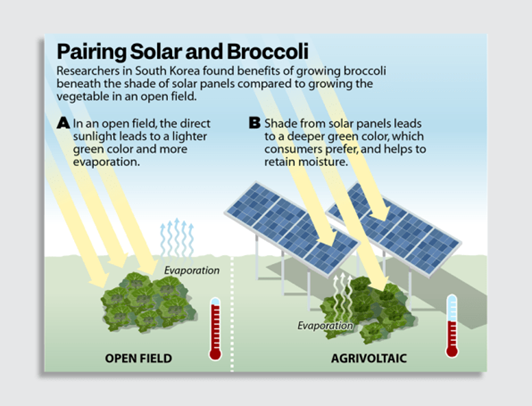
Credit: weforum.org
The agricultural domain is witnessing a transformative shift, with solar energy introducing green, cost-efficient energy alternatives to power farming activities. One standout solar integration in agriculture is the solar-driven irrigation system. These systems use solar power to operate pumps that facilitate water delivery to fields. This enables farmers to cut back on electricity or diesel usage and promotes water-saving and environmentally conscious farming techniques.
Greenhouses, pivotal for controlled crop growth, also board the solar train. When outfitted with solar panels, these structures can produce electricity vital for lighting, temperature control, and ventilation, ensuring ideal crop conditions. Adopting solar energy in this context allows farmers to mitigate energy costs and foster a greener agricultural setting.
Livestock farming, too, is seeing the solar advantage with solar-powered water pumps. These systems, driven by sunlight, assure a consistent and sustainable water source for animals, sidestepping the need for manual interventions or expensive electric setups. For livestock owners, this means both cost savings and a greener approach to meeting the hydration needs of their animals.
As solar applications are integrated into agriculture, conventional energy sources are gradually being reduced, operational expenses are being cut, and eco-friendly farming is becoming more common. Solar solutions offer farmers a sustainable and adaptive agricultural future despite climate shifts and energy demands.
Solar energy applications in transportation
The realm of transportation is witnessing a solar revolution, as the sun’s energy propels various mobile applications. One noticeable change is the rise of solar-fueled charging stations for electric vehicles (EVs). These stations, decked with solar panels, harness sunlight and transform it into electricity, readying it to juice up EV batteries. This transition allows EV drivers to minimize grid electricity usage and propels the move towards a more environmentally friendly transit system.
The skies aren’t untouched by solar advancements either. Emerging prototypes of solar-powered aircraft, with their wings adorned by solar panels, are looking to generate electricity for operational systems and offer supplemental power during flights. While the full realization of solar-powered commercial flights is still on the horizon, the potential to cut down on fuel usage and atmospheric emissions is promising.
The vast oceans and waterways are also seeing a splash of solar innovation. Vessels, from smaller boats to larger ships fitted with solar panels, draw energy from the sun. This helps power their onboard systems, curtailing the need for diesel generators. These solar-assisted marine vessels present a green and economically viable counterpart to their conventional fuel-guzzling counterparts.
With solar innovations steering transportation, there’s a clear move towards eco-friendly transit methods, reducing our environmental impact. As the clarion call for greener and cleaner modes of transport gets louder, solar energy is poised to be at the helm, guiding the transportation systems of tomorrow.
To sum up
Solar power is making a significant and transformative impact in various areas, including homes, businesses, factories, farms, and even vehicles. Whether equipping residences and commercial buildings with solar rooftops or establishing expansive solar power plants, as well as transforming how we irrigate, heat, and move, solar energy brings financial and green advantages. As tech advancements keep making solar power more user-friendly and efficient, its multiple uses pave the way for a greener, more sustainable future. So, whether you’re a homeowner, an entrepreneur, or someone who leads a community, a solar option tailored to your unique requirements also helps the planet.
